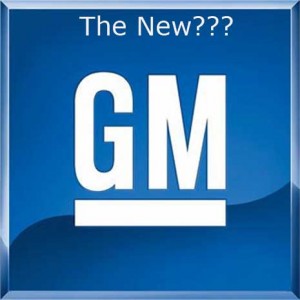
Could GM clear the hurdles and emerge from bankruptcy as early as July 10?
General Motors officials are back in court this morning, and what they have to say could determine the future of the bankrupt automaker.
Just a month after the 101-year-old company entered Chapter 11 protection, it is on track for a swift re-emergence as a “new” GM, possibly as soon as July 10th. But before that can happen, the automaker needs to get court approval to shed debt and bad assets, selling its “good” assets to an all-new entity that will have the federal government, a union health care fund, and two Canadian government bodies as its dominant shareholders.
The first critical step in a so-called “363 Sale” began on Tuesday with a hearing in federal bankruptcy court, in New York City. The hearing is continuing today, and despite the strong support of the Obama White House, there will be plenty of objections raised to the plan GM has laid out – a proposal that would, among other things, leave thousands of dealers losing their franchises, and bondholders swallowing billions in debt.
In his testimony, GM CEO Fritz Henderson noted that the automaker’s performance in the car market has been better than many expected since it filed for bankruptcy, on June 1st. That had been a matter of concern, particularly with some groups opposed to what they have dubbed “Government Motors” calling for a boycott of the company’s products. Emerging from bankruptcy, the CEO predicted, would “restore confidence” in the company and its products.
Henderson insisted that the proposed course of action, a sale of GM assets, rather than a restructuring of the entire company, was its best option, adding that, the automaker will emerge “fundamentally changed and improved.”
Henderson has been actively involved in the preparations for this week’s hearings, acknowledging to TheDetroitBureau.com, during an interview last week, that he is being kept on a “short leash” by representatives of the Obama Administration, which has closely overseen the GM plan.
Henderson, meanwhile, testified that the costs of winding down the “old” General Motors could eventually reach as much as $1.2 billion. The automaker intends to leave $950 million in the bankruptcy estate, and there is debate over how much – if any – money other assets left behind could ultimately generate.
Despite GM’s contentions, there were a number of opponents on hand, during Tuesday’s hearings, and more opposition is certain to be voiced today.
Calls by Judge Robert Gerber to keep arguments concise and brief were largely ignored, prompting the magistrate to declare that, “I’m not going to deny anybody due process, but I expect the questioning to be more focused.”
Among those testifying against GM were union representatives concerned that their members might lose health benefits as a result of the sale. A group of bondholders also sought to protest the automaker’s plan, though GM argued that it represented only a minority of debt holders, and that its three members had all purchased GM debt at a deep discount, in one case for just 2 cents on the dollar.
How long things could drag out is uncertain, though opposition to Chrysler’s planned emergence from bankruptcy, last month, dragged out a similar hearing for three days. Opponents of that automaker’s plan were able to temporarily block a proposed sale that was to give Italian automaker Fiat control. But after an initial stay, the U.S. Supreme Court decided not to hear the debate, allowing the completion of Chrysler’s bankruptcy proceedings.
That doesn’t mean Chrysler’s opponents have walked away, nor will GM’s. Frustrated dealers have been pressing for relief from Congress, and more than 75 lawmakers have reportedly signed onto a measure that might force the two makers to abandon planned cuts in their franchise system. But with the White House backing the restructuring plans of both GM and Chrysler, it is unlikely any measure would be able to become law.
GM has made at least one concession designed to soften opposition to its plans. It has said it will continue to be held liable to defective product and lemon law claims, even though it could have abrogated such liabilities under U.S. bankruptcy laws. Chrysler did so when it emerged from bankruptcy, last month, triggering a hue-and-cry from trial lawyers and those who claim they’d been injured by that maker’s products.
Though the current hearing is only one in a series of steps to be taken before the formal creation of the new GM, observers indicate the company very well could meet a self-imposed target of emerging from bankruptcy on or around July 10th with the proposed 363 sale.
